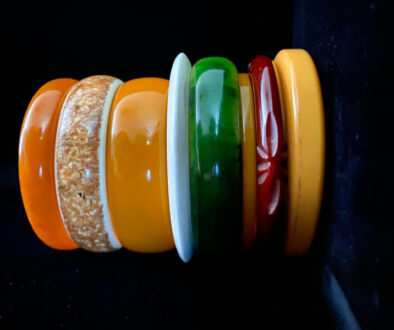The Soul of Garden State Produce

Imagine a world where people were afraid to eat tomatoes. No, thank you. For me, that would be a more dystopian landscape than what we are currently experiencing. Yet that world existed in the early 1800s.
New Jersey history is littered with mythological or apocryphal stories from the Jersey Devil, Molly Pitcher at the battle of Monmouth, to Bruce meeting The Big Man on a stormy evening in Asbury Park. The legend of Colonel Robert Gibbon Johnson may have had the biggest impact on the gastronomic landscape of the garden state, if it ever really happened.
Tomatoes originated in South America like corn and potatoes. Tomatoes, like peppers, eggplant, potatoes, and tobacco, are members of the nightshade family. Nightshade family members share the characteristic of having alkaloids. The nightshade family includes several species whose berries or fruits can be deadly, including the somewhat misogynistically named Atropos Belladonna. Most people avoided eating tomatoes and other nightshades out of fear.
On June 28, 1820, Colonel Johnson marched to the Salem County courthouse and proceeded to eat a basket of tomatoes. A crowd gathered, waiting for him to start foaming at the mouth and drop dead. The unexpected happened: nothing. Emerging unscathed, Colonel Johnson made way for the tomato to be an essential ingredient of cuisines throughout the world. The tomato’s reputation as deadly is probably linked to its acidity and the use of pewter plates in the 18th and early 19th centuries.


Every smartass child in the world knows that botanically the tomato is a fruit. In the United States Supreme Court in the case of Nix v. Heddon, the tomato was declared a vegetable for the purpose of import quotas and tariff assessment.
The tomato emerged from that June day in Salem County to become the face of Garden State produce. It also became the premier product of two of America’s greatest food companies, H.J. Heinz and Camden’s own Campbell Soup Company.
Dreary day comfort food gets no better than tomato soup and grilled cheese. Simplicity is the key to comfort food, and the tomato’s versatility in being delicious raw and cooked makes it perfect for sandwiches and salads. It is also why it’s the basis of so many classic foods. Foods pair well together when they have opposing yet complementary flavor profiles. Rich, buttery grilled cheese with the acidic bite of tomato: instant classic. The best sandwich contains a mere five ingredients but is composed with texture, color, and complementary flavors: the BLT. The smoke and fattiness of bacon is offset by the acidity of tomato combined with mayonnaise—Hellman’s only!—the crunch and lightness of iceberg lettuce nestled between two slices of white bread. Sandwich perfection.

As an ingredient, the tomato is as flexible as an Olympic gymnast. It can be a sauce or a side dish. In a world of brown proteins, white starches, and green vegetables, the tomato is a splash of color and a burst of flavor, making it a vital tool in a chef’s tool kit.
The tomato has only become widely accepted in modern cooking for a little over 200 years. Imagine a world without tomatoes. No pizza, no spaghetti sauce, no salsa, no ketchup. Okay, I could live without ketchup, but tomatoes appear in nearly every cuisine around the world.
Few tomatoes are better than a Jersey tomato. Sadly, good quality fresh tomatoes are only available for about six to eight weeks. I have vigorously debated with many chefs over the years on fresh versus canned when it comes to making tomato sauces. Not all tomato-based sauces are Italian, so spare me the “it’s gravy” comments. If you’re industrious and you make and freeze or can significant quantities of tomato sauce in the summer, bless you. Most people don’t have the time or resources. Canned tomatoes are harvested and processed at the peak of flavor, unlike fresh tomatoes which are oftentimes chemically ripened. A good quality canned tomato makes a better sauce than a faux ripened tomato.
This month, celebrate the inimitable Jersey tomato in some of my favorite recipes. Roasted Garlic and Tomato Soup with Grilled Bacon and Bleu Cheese sandwich. Tomato Provençale—this simple broiled tomato is excellent paired with grilled meats or fish. Once ubiquitous on high-end menus, this French classic has all but disappeared and is deserving of a second look. Tomato Panzanella Salad. A slight persnickety note on tomato salad: do not drown them in balsamic vinegar. The tomato, especially a Jersey tomato, is the focal point of the salad and its natural acidity is enough. Good olive oil and salt are the perfect enhancement. Balsamic vinegar muddies the plate and the palate. Fried Tomatoes, Bacon, and Arugula. And finally, Ricotta Fritters with Fresh Tomato Jam. Enjoy.
Recipes in this issue









